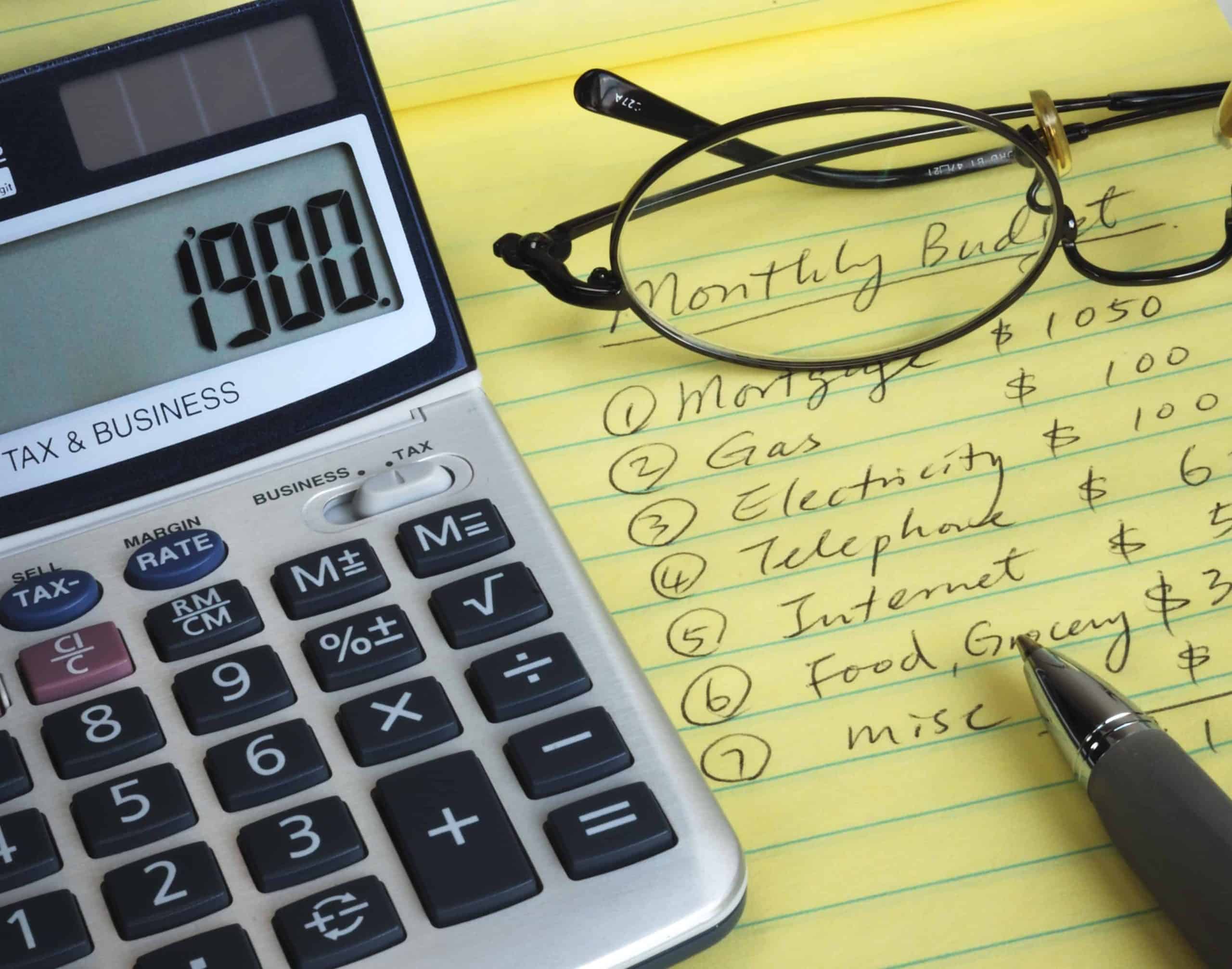How to Do Your Own Taxes
Knowing how to do your own taxes is a great skill to have. It’s not as complicated as you think, and it can help you save money and be in control of your finances. Tax preparation can be expensive and time-consuming, especially when you have to wait for an appointment.
Some of the links in this post are affiliate links. We may receive compensation when you click on links to products at no extra charge to you. View our full disclaimer.
If you want to learn how to file your own taxes to get your tax refund going, here’s what you must know.
Steps on How to Do Your Own Taxes
Pros and Cons of Doing Your Own Taxes
Whether you’ve done your own taxes before or this is your first time, there are pros and cons to taking on this large task yourself.
Pros
- Save money – Tax preparers charge a healthy fee to file your taxes. It’s not unusual to pay $250+ to have someone do your taxes. That can hurt, especially if you have a tax liability rather than receiving a refund.
- You’ll learn what affects your tax liability – Doing your own taxes helps you understand what triggers the liabilities and where you can make changes. You may find areas you can change for next year, saving you more money on taxes.
- Do them on your own time – When you work with a tax preparer, you have to work on their schedule. If you work with them during the busy time, you may wait weeks or longer to see your bottom line. When you handle your own taxes, you are in charge of when you prepare your taxes.
Cons
- It can be confusing – If you have a complicated income situation or have many write-offs, it could get tedious or confusing to prepare your taxes.
- You risk making a mistake – If you make a mistake, the IRS will likely catch it. While it’s not the end of the world, it’s still frustrating and time-consuming. If the error resulted in under-paying your taxes, you might owe a penalty for the late payment.
- It’s hard to find help – Tax preparation software may offer some customer support, but it may not be enough if you have a complicated tax question.
What You Need to File Taxes
Before you try to do your own taxes, know what you’ll need to make the process easier.
Documents
Before you can file your taxes, you need to gather your financial documents. The most common documents include:
- W-2s
- 1099s
- Interest income statements from the bank
- Investment income statements
- Mortgage interest statements
- Receipts from any charitable donations
- Records from the sale of any properties
- Documents from alimony or child support received
Filing Status
As you learn how to do your own taxes, you must determine your filing status. It plays a vital role in the entire tax preparation process. Here are the options:
- Single – Any unmarried, divorced, or legally separated taxpayer is a single filer
- Married filing jointly – If you were married on or before December 31 of the tax year, you could file married filing jointly with your spouse.
- Married filing separate – Some married couples file separately, but it’s often not financially beneficial.
- Head of household – If you live with someone but aren’t married, you may qualify as the head of household if the person is your child, parent, or another relative. The IRS has strict guidelines regarding who qualifies.
- Widow or widower with dependents – If your spouse passed away and you have children, you may file with this status.
>> Pro Tip: Click here for the IRS Quiz: What Is My Filing Status?

How to Do Your Own Taxes: 3 Simple Methods
There are three simple ways to do your own taxes. Choose the method that’s easiest for you.
Paper and Ink
If you’re a paper and pen type of person and don’t mind doing a few calculations, you can do your taxes by hand. You’ll need to download the tax forms from the IRS website and mail them to the IRS. The pen and paper method gets a bit tedious, so only choose this option if you have simple tax returns.
Online Form
If you want to do your taxes for free but would rather not write them out, the IRS has fillable forms available online. This can be a slightly better way to prepare your own taxes since each line has instructions you can follow to help you file your taxes.
Online Tax Software
If your tax situation is anything but simple, consider an online tax software program. While it will cost $30 – $160 depending on the program you need (the more complex your situation, the more it costs), it makes filing taxes easier.
Most online tax software programs walk you through the process step-by-step, and some even offer live support from a tax professional over the phone or online chat.
7 Steps for Doing Your Own Taxes
Filing your own taxes isn’t as hard as it seems. Using the steps below, you can complete your taxes with either the manual method or tax software.
1. Pull Your Documents From Last Year
If you’re using the same program as last year (but this year’s version), you may be able to import your documents from last year. It simplifies matters and makes filing your taxes go faster. If you complete the forms manually or use a different program, pull last year’s tax returns and main documents (paystubs, W-2s, etc.) and re-enter the information.
2. Get This Year’s Documents
Gather all documents you need from this year. They may be similar to last year if you’re at the same job, have the same mortgage, and the same bank accounts, but to be sure, here’s a general list:
- W-2s from all jobs
- 1099s you received from any non-employee compensation
- Year-end bank account statements
- Year-end investment account statements
- Year-end mortgage statements
- Real estate tax bills
- Proof of any deductions, such as charitable contributions, medical expenses, or childcare deductions
3. Decide Which Deductions Apply to You
Everyone is eligible for the standard tax deduction, which for the 2020 tax year is $12,400 for single filers and $24,800 for married filing jointly couples.
If you have enough itemized deductions to exceed the standard deduction, you can itemize your deductions. Itemizing requires much more paperwork because you must provide proof of the expenses. Common itemized deductions include mortgage interest, charitable contributions, and childcare expenses.
4. Complete Your Federal Taxes
Put in all your information, including your earned income, investment income, and any eligible expenses that help lower your tax liability. Complete all forms and schedules, including Schedule A for itemized deductions, Schedule C if you’re self-employed, and Schedule D for capital gains for your investments.
5. Complete Your State Taxes
After you complete your federal income taxes, use the numbers for your state taxes. You may need some additional information, but most numbers come directly from your federal income taxes, so always complete your federal taxes first.
Check with your state to see if they offer free online state tax filing or if you have to use a service, like TurboTax or TaxAct, to file them.
6. File Your Taxes
After you complete your taxes, it’s time to file. You can file both your state and federal taxes electronically. This is usually the fastest way to get them filed and receive your refund if you’re receiving one.
If you’d rather mail your tax returns, you can. You won’t get any confirmation that they received it, but you can send it certified mail if you’re worried about them getting lost.
7. Check for Acceptance
After you file your federal taxes electronically, you should receive an email stating if they accepted or rejected your return. Check your junk mail if you don’t see it in 24 – 48 hours. If they reject it, they’ll give you a reason why so you can fix the error and resubmit. If they accept it, though, you’re done!
How to Do Taxes Yourself FAQ
What Is the Best Way to Do My Own Taxes?
The best way to do your own taxes is the way that makes you feel the most comfortable. If you’re a pen-and-paper type of person, complete your taxes manually. If you have a complicated tax situation, you may want to use tax software because it will walk you through the process step-by-step and answer your questions along the way.
Is It Hard to Do Your Own Tax Return?
It’s not hard to do your own tax return, but it is time-consuming and a little nerve-wracking. If you’ve never done them before, look at your situation. Will you itemize deductions or take the standard deduction? Do you have a lot of schedules, such as self-employment income or capital gains? The more complicated your tax situation, the more work is involved in doing your taxes.
Is It Better to Do Your Own Taxes?
There’s no right or wrong when it comes to doing your taxes. You’ll save money doing your own taxes, but if you miss tax deductions or overlook necessary tax documents, you may have to file an amended return and/or answer to the IRS down the road.
If you know what you’re doing or can follow along on a tax software program, it’s undoubtedly an excellent way to save the money that a tax preparer would charge.
How Much Do You Have to Make to File Taxes?
The amount of money you must make to file taxes depends on your filing status. Here’s the basic information:
- Single and under 65-years old – File taxes if you make more than $12,400
- Single and over 65-years old – File taxes if you make more than $14,050
- Married filing jointly and both spouses are under 65-years old – File taxes if you make more than $24,800
- Married filing jointly and one spouse is under 65-years old, and one is over 65-years old – File taxes if you make more than $26,100
- Married filing jointly and both spouses are over 65-years old – File taxes if you make more than $27,400
When Can You File Taxes?
IRS Free File (online federal tax filing) opens on January 15th each year. The taxes are due by April 15th of each year.
Do You Have to File Taxes if You Have No Income?
If you don’t meet the minimum income requirements for filing taxes, you don’t have to file taxes. If you have no income, you don’t meet the threshold and don’t have to file taxes.
Do You Have to File State Taxes?
Each state has its own tax laws and income thresholds that trigger a tax liability. Check with your state’s tax requirements. If you only lived in a state for a short amount of time, you may not have to file taxes, but again check with the state to make sure.
How Long Do You Have to File Taxes?
You’re supposed to file taxes every year. If you don’t file your taxes and you’re due a refund, you lose it if you don’t file within three years. If you miss the tax filing deadline, you should still file your tax returns no matter how much time passed. The longer you go without filing your taxes and paying any tax due, the more interest and penalties you’ll pay, so it’s to your benefit to file on time.
How Many Years of Taxes Should You Keep?
You should keep your tax returns for at least three years from the date you filed your taxes. If you owed money, keep your tax returns for at least two years from the last date you paid your tax liability or whichever date is greater.
How Long Does It Take to File Taxes?
The IRS takes approximately 21 days to process an electronically processed tax return. It takes longer to process a mailed-in tax return because of the time it takes to receive and log the tax returns.
How to Do Your Own Taxes: A Skill Everyone Should Know
Even if you have a complicated tax situation now, you may not have the situation forever. Knowing how to do your own taxes can save you quite a bit of money and time, especially when you use the standard deduction and have a simple income.
You have many options to file your own taxes. Just make sure you take advantage of all tax deductions and tax credits available to you to keep your tax liability down.







